Bees have developed a reputation because of their nasty stings. The burning pain and swelling from their stings are enough to make you run away. Curiously, there are different subspecies of bees – do all of them sting?
Not all bees sting. Bees sting for two reasons: as a defense mechanism and to attack other bees in a contest to be queen. Interestingly, male bees are incapable of stinging because only females possess the stinger. Also, other bee subspecies do not have it in their nature to sting.
So, which bees sting and which do not? What happens to them after they sting? How do you treat a bee sting? These are just some of the questions that this article seeks to answer.
Table of Contents
Why Do Bees Sting?
Like most insects and animals, bees mainly sting as a defense mechanism. This usually occurs when they feel threatened, aggravated, or attacked.
Even when they’re not exactly under attack, bees can feel aggravated by seemingly innocent instances. Loud sounds from lawn mowers, or the rapid swatting actions to shoo them away, are some of these instances. So to prevent bees from stinging you, it’s best to leave them alone if you see one, especially if there’s a hive nearby.
But aside from being a defense mechanism, bees also use their stinger to attack other bees. However, this is only applicable to queen bees. Developing queen bees are observed to sting and attack each other. The surviving bee then becomes the queen, who will be served with royal jelly and be responsible for mating.
Nevertheless, not all bees are capable of stinging. Some are too gentle to even think of launching an attack, while others are simply born with no stingers.
Do Carpenter Bees Sting?

Carpenter bees sting. While generally docile, carpenter bees are known to attack when touched or aggravated. Carpenter bee stings are infamous for the excruciatingly sharp pain and immediate burning sensation that it produces.
Do Mason Bees Sting?
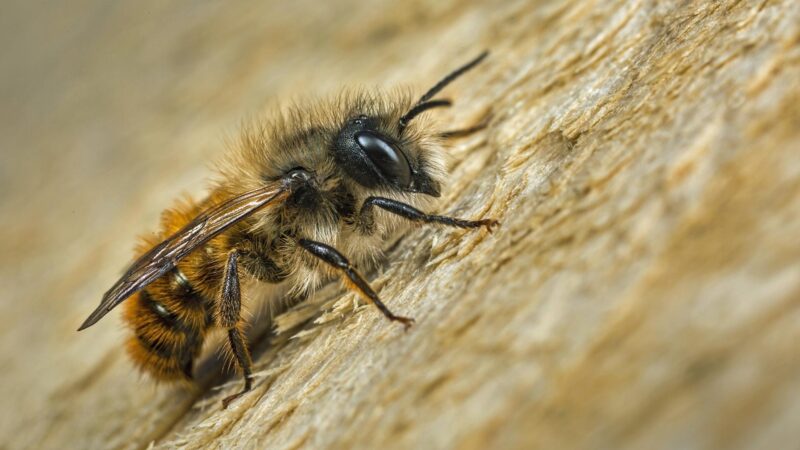
Mason bees are not known to sting. Mason bees are among the gentle bee species who do not find it in their nature to attack. While they do have stingers, their docile temperament will likely cause them to flee instead of fighting back.
Do Sweat Bees Sting?
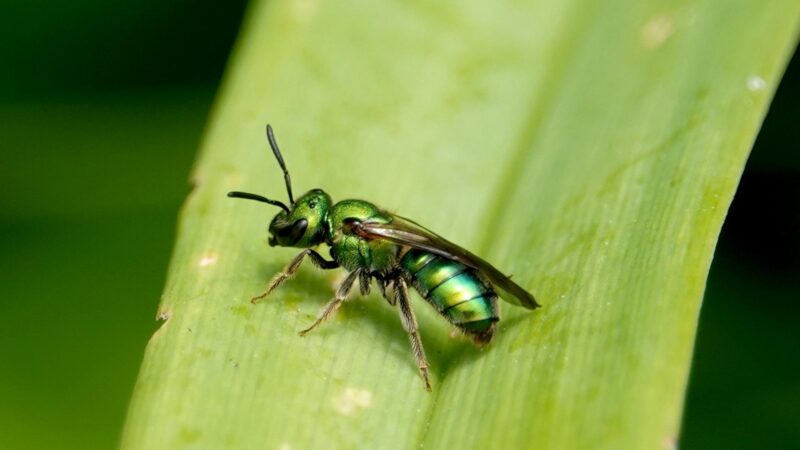
Sweat bees do sting, but they only do so rarely. Like mason bees, sweat bees are also considered to be among the gentle bee species. However, there are instances of sweat bees attacking when they’ve been shaken or purposely attacked.
Related: How to Get Rid of Sweat Bees? | Identification and Control Guide
Can Bumblebees Sting?
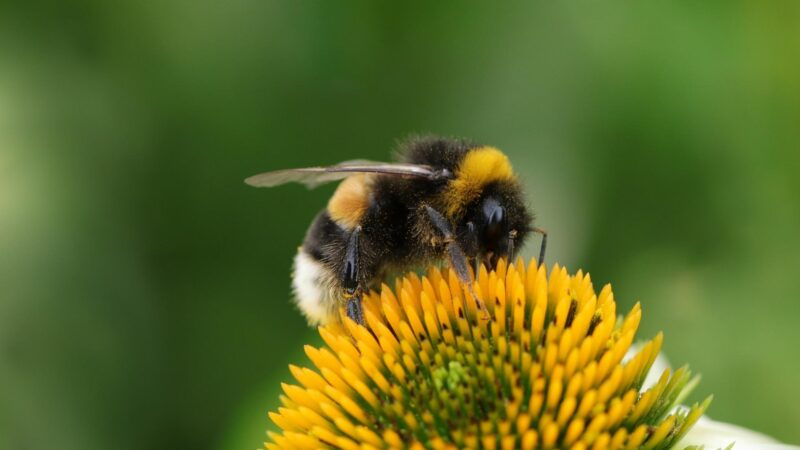
Bumblebees can sting. They are among the bee subspecies with a smooth stinger, which allows them to sting multiple times. They are known for their itchy stings that can cause the skin to swell and turn red.
Related: Natural Ways to Get Rid of Bumble Bees | A Detailed Guide
Do Honey Bees Sting?
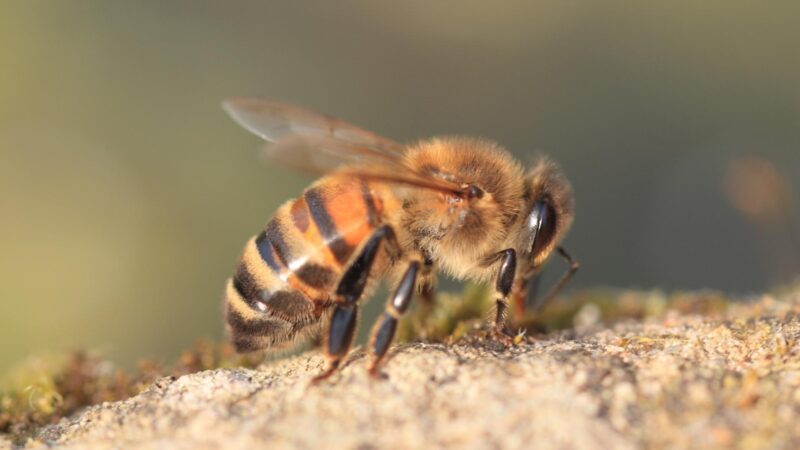
Honey bees can sting. But unfortunately for the honey bee, its stinger detaches from its body after it stings, and that can cause it to die soon after. This is because the honey bee stinger has a jagged appearance, and that causes it to anchor onto your skin. But, be careful when you’re removing the stinger since the venom sac is still attached to it.
Do Queen Bees Sting?
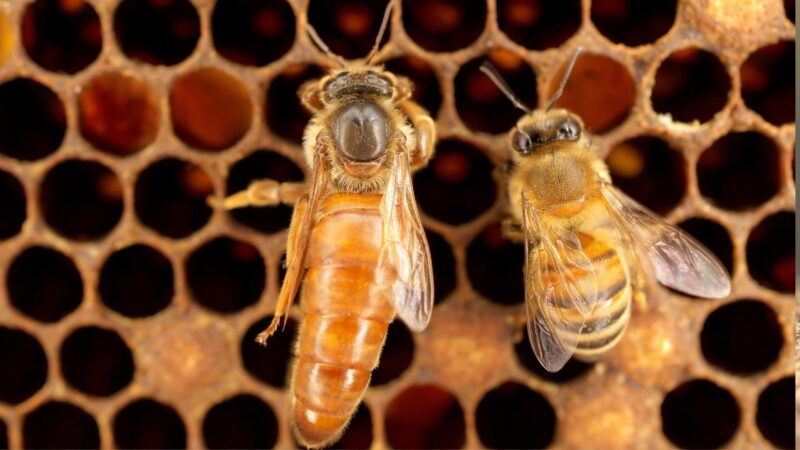
Queen bees do sting. In a colony, developing queen bees will emerge to replace their current queen. If two of them will emerge at the same time, they often use their stingers to fight to the death. The surviving bee then becomes the new queen.
What Bees Don’t Sting?
Not all bees are capable of stinging. It may either be because of their gentle nature or simply because they have no stingers. Here are the bee subspecies that do not sting:
- Stingless bees – Contrary to their names, stingless bees have stingers. However, these stingers are considered to be too small to be used as a defense mechanism.
- Mason bees – Mason bees are gentle and solitary. They do not have it in their nature to attack by stinging.
- Male bees – It may come as a surprise, but male bees cannot sting. A bee’s stinger is its modified ovipositor or egg-laying device. Since only the female bees are egg-layers, it logically follows that only the females have stingers. Thus, male bees cannot sting because they are not born with stingers.
How Do Bees Sting?
Bees sting by plunging their stinger until it punctures your skin. To be cautious, there are ways you can tell when a bee is about to attack.
The first sign you have to look for is if the bee raises its middle legs. While it’s not always the first sign of an attack, it has been observed that most bees raise their middle leg when they feel threatened.
Then, bees prepare to sting by getting into position – making the end of their abdomen face you. The stinger is located at the tip of the abdomen. So when they are about to sting, they curl their bodies so that the stinger is drawn closer to your skin.
However, all of these may happen too fast. You may not have enough time to notice all these warning signs.
Do Bees Die When They Sting?
Not all bees die when they sting. Within the bee subspecies, only the honey bee dies after it stings. As discussed earlier, honey bees have jagged or barbed stingers that cause them to anchor onto the skin. As a result, it detaches from the bee’s body, causing it to die soon afterward.
To explain, you must understand a bee’s anatomy. It is established that the stinger is the bee’s modified egg-laying device and is located at the tip of its abdomen. When the stinger detaches from its body, its venom sac and parts of its digestive tract detach with it. That’s why honey bees die after they sting.
Can Bees Sting More Than Once?
Some bee subspecies can sting more than once. As established, only the honeybee dies after stinging because it causes a rupture in its body.
Most bees have a smooth stinger that does not detach after stinging. As a result, these bees can sting more than once.
What Does a Bee Sting Look Like?
A bee sting will look pinkish, reddish, and swollen. You can tell that it’s a bee sting because it has a tiny white spot at the center, which indicates where you’ve been stung. In the case of a honeybee sting, you will see a tiny black spot at the center, which is the detached stinger.
What to Do for a Bee Sting?
Bee stings can be itchy, painful, and can even trigger horrible allergic reactions in some people. That’s why it’s important to know the steps you have to do in case you’ve been stung by a bee.
Step 1: Take the stinger out. In the case of honey bees, make sure to take the stinger out first. You can do so by scraping it off with your fingernails or with a card. For all other bee species, you can skip this step.
Step 2: Clean the area with soap and water. It’s important to clean the affected area as soon as possible to prevent any subsequent infection.
Step 3: Apply a cold compress. Once the area is clean, you can apply a cold compress to treat the swelling. It can also help numb out the itchiness or burning sensation from the sting.
Step 4: Take antihistamines and over-the-counter pain relievers. In case you develop an allergic reaction to the venom, or if the pain from the sting becomes unbearable, don’t hesitate to take over-the-counter medication.
Step 5: Seek emergency professional help. In extreme cases, especially if the allergic reaction results in anaphylaxis, you should head to the hospital to get treated immediately.
How to Remove a Bee Stinger?
The right way to remove the honey bee stinger from your skin is by scraping it off. You may do so with a fingernail, a credit card, or a piece of gauze.
You mustn’t squeeze it out, as in the case of using tweezers. By doing so, you may also squeeze the venom sac that has detached from the stinger, which can only cause more venom to enter your body.
How Long Does a Bee Sting Last?
The full effects of a bee sting can last for up to 7 days. For the first hours post-sting, you will feel an itch or a burning sensation with some swelling. Within 48 hours, the swelling will get noticeably bigger, along with some redness surrounding the sting site. Within 7 days, the redness and the swelling will fade completely.
Are Bee Stings Good for You?
Some professionals believe that bee stings may be good for you. However, it should be administered with caution and only by a professional.
Otherwise known as Bee Venom Therapy, this treatment is believed to help with conditions like rheumatism and arthritis while also strengthening immunity. While it’s not a popular treatment, it is practiced in Asia, South America, and some parts of Europe.
However, bee venom can cause quite an allergic reaction, with some leading to dangerous cases of anaphylaxis. That’s why Bee Venom Therapy is not for everyone – and should always be exercised with caution.
Can a Dead Bee Sting You?
Surprisingly, a dead bee can still sting you. Even when the bee has died, its stinger is still considered venomous. So while it may not sting you on purpose, the stinger is still capable of injecting venom into your body.
In what cases can this happen? Examples include playing with a dead bee or accidentally stepping on a dead bee.
All things considered, not all bees attack people by stinging. Even within the bee species that do sting, only the females are capable of stinging. Nevertheless, bear in mind that they only resort to it when they feel aggravated or threatened. As long as you let them go about their business, there’s nothing to be afraid of.
List of Sources
Risk Associated With Bee Venom Therapy: A Systematic Review and Meta-Analysis
Methods of Honey Bee Stinger Removal: A Systematic Review of the Literature